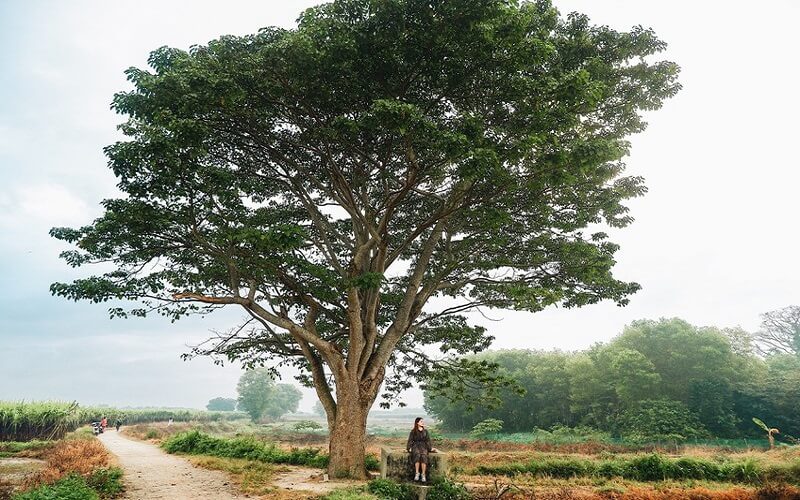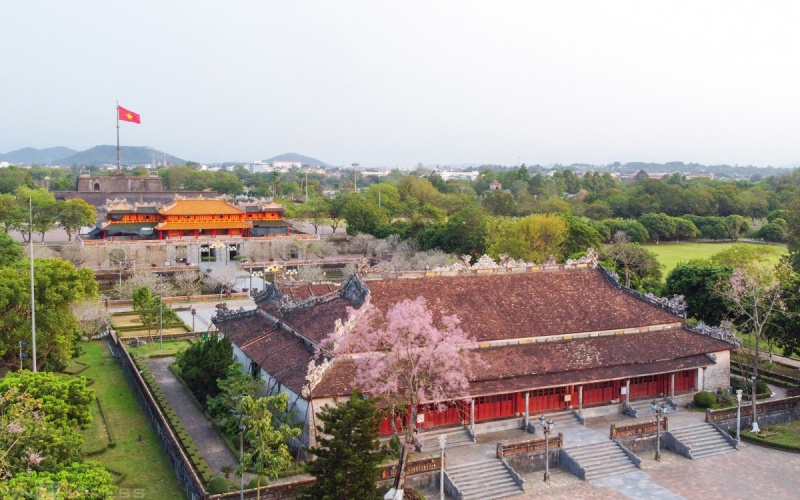The Chinese Parasol Tree, also known as the Firmiana Simplex, has long been considered a precious hardwood tree in China and other parts of East Asia, including Vietnam. With a rich history and cultural significance, this tree is believed to bring good fortune and is often associated with royalty.
1 What is the Chinese Parasol Tree?
Origin and Significance of the Chinese Parasol Tree
The Chinese Parasol Tree, scientifically known as Firmiana Simplex, belongs to the Malvaceae family and is native to China and neighboring East Asian regions, including Vietnam. In the ancient Chinese text, this tree is associated with royalty and good fortune. According to legend, during the reign of Emperor Fuxi, five constellations appeared above a parasol tree, followed by the appearance of a phoenix, which is considered a symbol of good luck and prosperity.
 The Chinese Parasol Tree, scientifically known as Firmiana Simplex
The Chinese Parasol Tree, scientifically known as Firmiana Simplex
The tree’s association with royalty and good fortune led to it being widely planted in imperial palaces and gardens. Additionally, Emperor Fuxi is believed to have used the wood of the parasol tree to create a musical instrument, further enhancing its cultural significance.
In Vietnam, the tree holds a significant place in the country’s history as well. King Minh Mang of the Nguyen Dynasty had the tree carved onto the Nine鼎, symbolizing the power and authority of the royal court.
Due to its light, durable, and resonant wood, the Chinese Parasol Tree is highly valued for crafting traditional musical instruments such as the guqin (a stringed instrument similar to a zither) and the dan tranh (a long zither).
Feng Shui Significance of the Chinese Parasol Tree
In Feng Shui, the Chinese Parasol Tree is considered a symbol of good luck and fortune. Its pink or red flowers, combined with the legend of the phoenix, make it particularly suitable for those with Fire elemental signs in Feng Shui, such as people with the Ding or Binh signs.
 Feng Shui Significance of the Chinese Parasol Tree
Feng Shui Significance of the Chinese Parasol Tree
The tree is believed to attract positive energy and bring good luck to homes and is often planted in gardens to invite prosperity and ward off negative influences. In terms of direction, the tree is best placed facing south or southeast, which is associated with the Vermilion Bird in Feng Shui.
Characteristics of the Chinese Parasol Tree
The Chinese Parasol Tree is a tall, straight tree, typically growing to a height of 15-17 meters with a trunk diameter of 40-50 centimeters. Its bark is smooth and grayish, and its leaves are palmate, with 3-5 lobes and a soft, hairy underside.
 Characteristics of the Chinese Parasol Tree
Characteristics of the Chinese Parasol Tree
The tree produces beautiful, pale pink flowers that bloom in the fall. The flowers have five petals and are unisexual, with male and female flowers appearing on separate trees. The fruits are oval-shaped and contain numerous seeds.
2 Benefits and Uses of the Chinese Parasol Tree
The Chinese Parasol Tree has a variety of uses, from woodworking to traditional medicine.
 Benefits and Uses of the Chinese Parasol Tree
Benefits and Uses of the Chinese Parasol Tree
Its wood is highly valued for creating fine furniture and decorative items, as well as traditional musical instruments. The tree’s large, egg-shaped canopy and straight trunk also make it ideal for landscaping, providing shade and purifying the air.
Additionally, the leaves of the Chinese Parasol Tree have medicinal properties and are used in small doses to treat hemorrhoids and ulcers. The fruits of the tree are used to create antihistamine medications to treat allergies. The seeds contain up to 40% oil, which can be used for making soap and fuel for lamps.
3 How to Grow and Care for the Chinese Parasol Tree
Growing the Chinese Parasol Tree at Home
To grow a Chinese Parasol Tree, start by selecting a healthy sapling from a reputable source. Choose a suitable location, dig a hole, and place the sapling in the ground. Fill the hole with soil and water the tree regularly to maintain moisture.
 Growing the Chinese Parasol Tree at Home
Growing the Chinese Parasol Tree at Home
Caring for the Chinese Parasol Tree
Here are some tips to ensure the healthy growth of your Chinese Parasol Tree:
- Soil: Choose nutrient-rich, well-drained soil.
- Watering: Water the tree three times a day initially, reducing to twice a day as it establishes itself. Avoid watering too close to the trunk to prevent waterlogging and root rot.
- Fertilizer: Use nitrogen, phosphorus, or NPK fertilizers during the tree’s growth phase to promote healthy development.
 Caring for the Chinese Parasol Tree
Caring for the Chinese Parasol Tree
Notes on Growing and Caring for the Chinese Parasol Tree
- When using cuttings to propagate the tree, select healthy, robust branches with many twigs and no signs of disease. Cut the branches into 15-20 cm long segments and let them dry for 24 hours to seal the cut ends.
- Before planting, apply rooting hormones such as N3M, Bimix Super Root, or Roots 2 to increase the likelihood of successful root development.
- If you choose to grow the tree from seeds, purchase high-quality seeds from a reputable source to ensure a higher germination rate and healthier seedlings.
- Alternatively, you can collect seeds from ripe, healthy fruits. Choose fleshy, mature fruits with robust seeds. However, keep in mind that germination rates may be lower, and the resulting trees may not be as vigorous.
 Select healthy saplings for planting.
Select healthy saplings for planting.
4 Beautiful Images of the Chinese Parasol Tree
 The Chinese Parasol Tree’s canopy peeking over a rooftop
The Chinese Parasol Tree’s canopy peeking over a rooftop
 A vibrant branch of the Chinese Parasol Tree in full bloom
A vibrant branch of the Chinese Parasol Tree in full bloom
 A stunning display of Chinese Parasol Trees in bloom
A stunning display of Chinese Parasol Trees in bloom
 A distant view of the Chinese Parasol Tree
A distant view of the Chinese Parasol Tree
 The Chinese Parasol Tree in all its glory
The Chinese Parasol Tree in all its glory
The Chinese Parasol Tree is a fascinating tree with a rich history and cultural significance. We hope you enjoyed learning about this remarkable tree and its many benefits and uses.
2023 Lunar New Year Gift Ideas for Older Family and Friends
As 2021 approaches, families worldwide are gathering to celebrate the special bond between grandparents and their grandchildren. To show their love and admiration, these thoughtfully chosen gifts will bring a smile to the face of the elderly. Here, we have compiled a list of the 13 most meaningful Tet presents that can bring joy to our beloved grandparents.



































